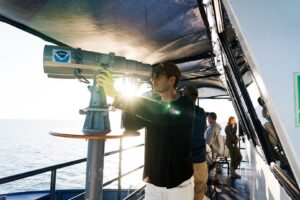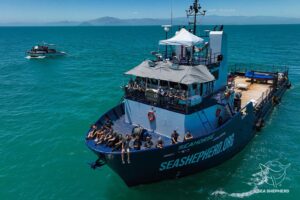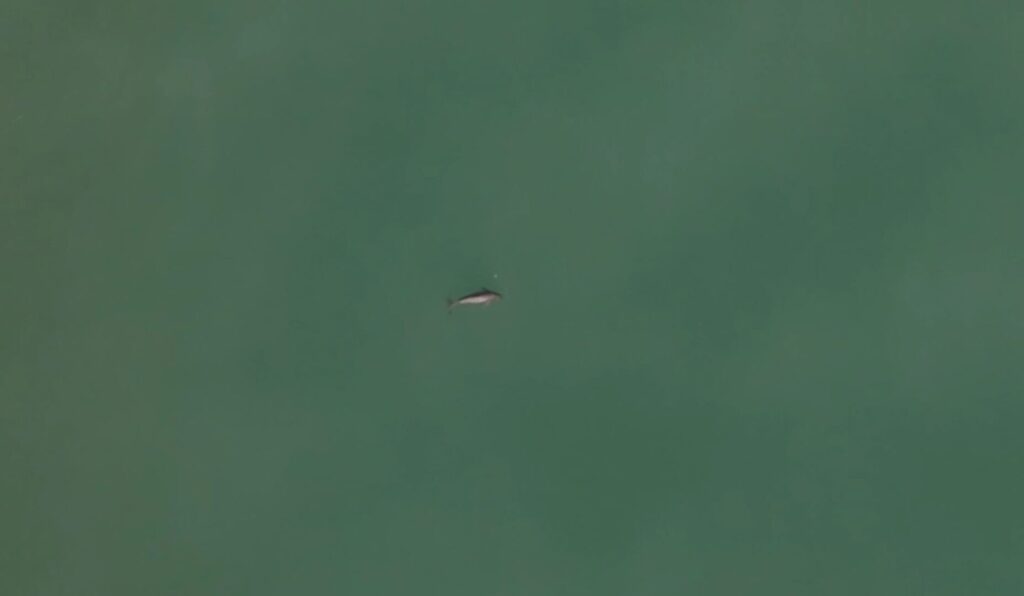At the end of the Vaquita Observation Cruise 2024 to monitor the population of the vaquita porpoise in the Upper Gulf of Californiagovernmental and non-governmental organizations expressed concern about a decrease in the number of individuals observed.
Sea Shepherd Conservation Society stressed that efforts and determination to protect the world's most endangered marine mammal remain steadfast, despite the worrying results.
On this occasion, between 6 and 8 vaquitas were observed during the 2024 SurveyThis represents a decrease from the 8 to 13 vaquitas observed in 2023. Unlike the previous year, no newborn calves were recorded, although one healthy yearling was sighted.

Visual and acoustic efforts were focused on the waters in and around the Zero Tolerance Area (ATZ), considered a stronghold for the remaining vaquita. Half of the 9 sightings this year occurred outside the ATZ proper and within the ATZ extension area (EA).
"Sea Shepherd's commitment to the survival of the vaquita is absolute. Together with the Mexican government, we will redouble our efforts to protect this species and, in the coming weeks, we will support CONANP in implementing new technologies to help find the vaquita, strengthening our ability to defend the most endangered marine mammal on the planet," said Pritam Singh, president and CEO of Sea Shepherd.
This organization has been involved in efforts to protect the vaquita since 2015, through the Operation Miraclein collaboration with the Mexican government.

Barbara Taylor, leader of the comprehensive assessment, commented that while these results are concerning, the area surveyed represents only 12% of the total area where vaquita were observed in 2015.
"Because vaquita move freely within the Vaquita Refuge, we must expand the study using acoustic detection to determine where vaquita are heading. Vaquitas outside the sanctuary, which is provided with concrete blocks with hooks, will need protection from gillnets, the only threat to vaquita," he explained.
The Vaquita Census 2024 was held from May 5 to 26, 2024, in a small region of the Upper Gulf of California in Mexico. This study is the result of a collaboration between Sea Shepherd and the National Commission of Natural Protected Areas (Comisión Nacional de Áreas Naturales Protegidas) of Mexico (CONANP), and was conducted by the Mexican acoustics team led by Dr. Gustavo Cárdenas-Hinojosa, along with 14 highly trained and experienced observers under the direction of Dr. Taylor.
Acoustic locations guide the visual survey to improve the search for this elusive porpoise. The visual survey located and tracked vaquita from two vessels, the Sea Shepherd vessel M/V Seahorse and a private vessel, the Sirena de la Noche, both serving as observation platforms to help estimate the minimum population size of live vaquita in the ATZ and the Vaquita Refuge EA. The Mexican Navy provided logistical support.

Based on the results, the CONANP announced the expansion of acoustic research to July and August in recently favored vaquita habitat. CONANP will deploy 30 acoustic detectors to listen for vaquita in areas where vaquita were detected acoustically and visually in 2015.
These efforts, which also include the Secretary of the Navy, Cetaceans, Action and Transformation, ABC Fishing, Pronatura Noroeste y ReWild reflect an unwavering commitment on the part of all these organizations involved to save the vaquita, the most endangered marine mammal on the planet.


